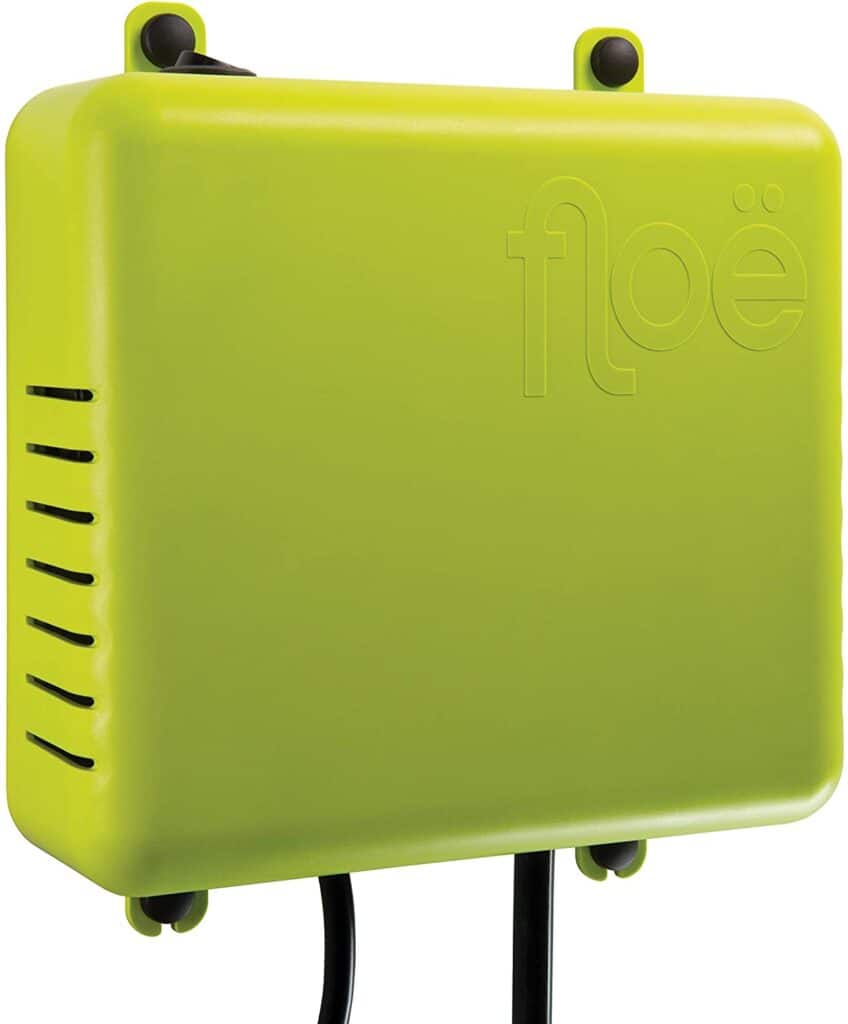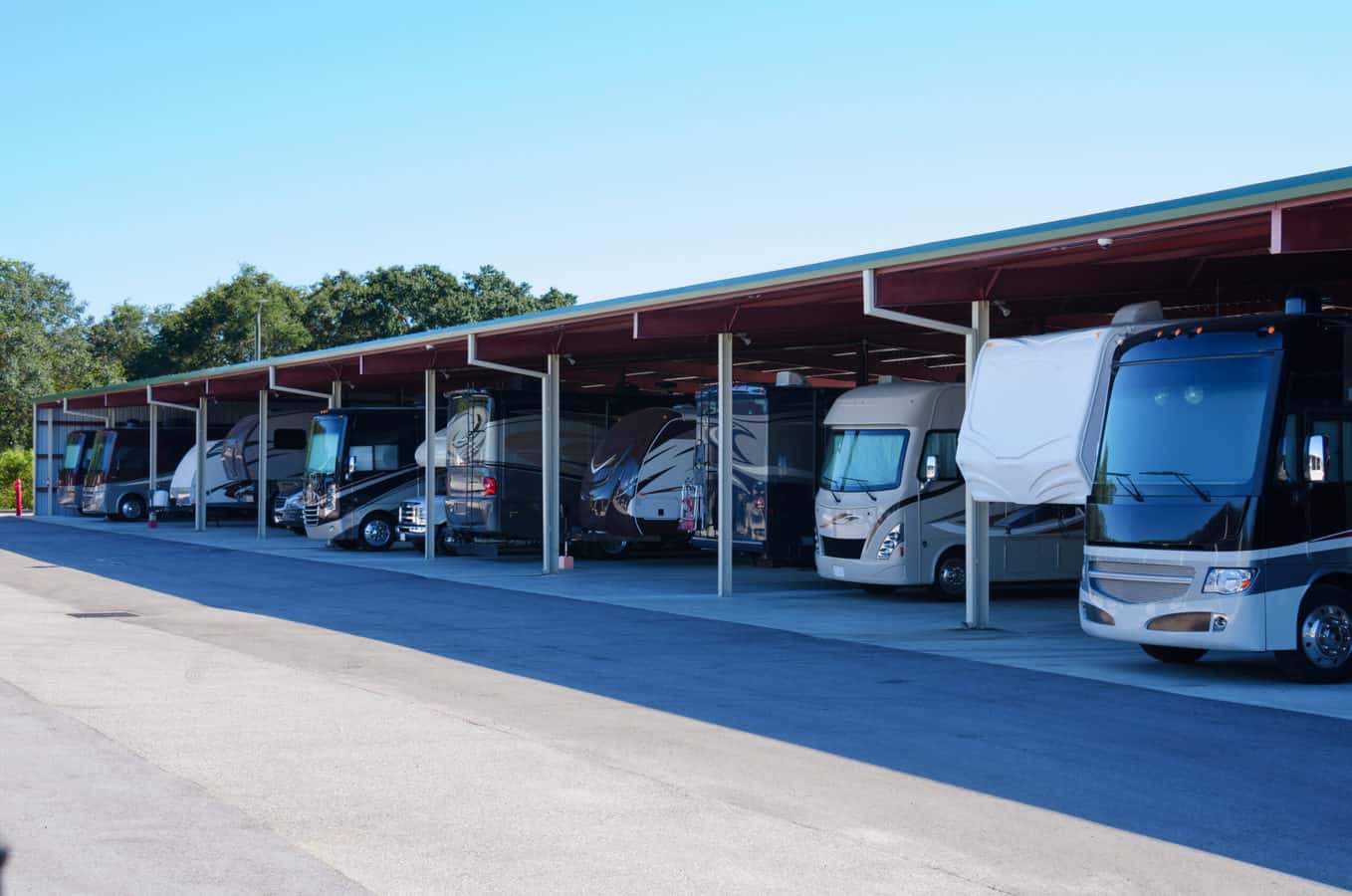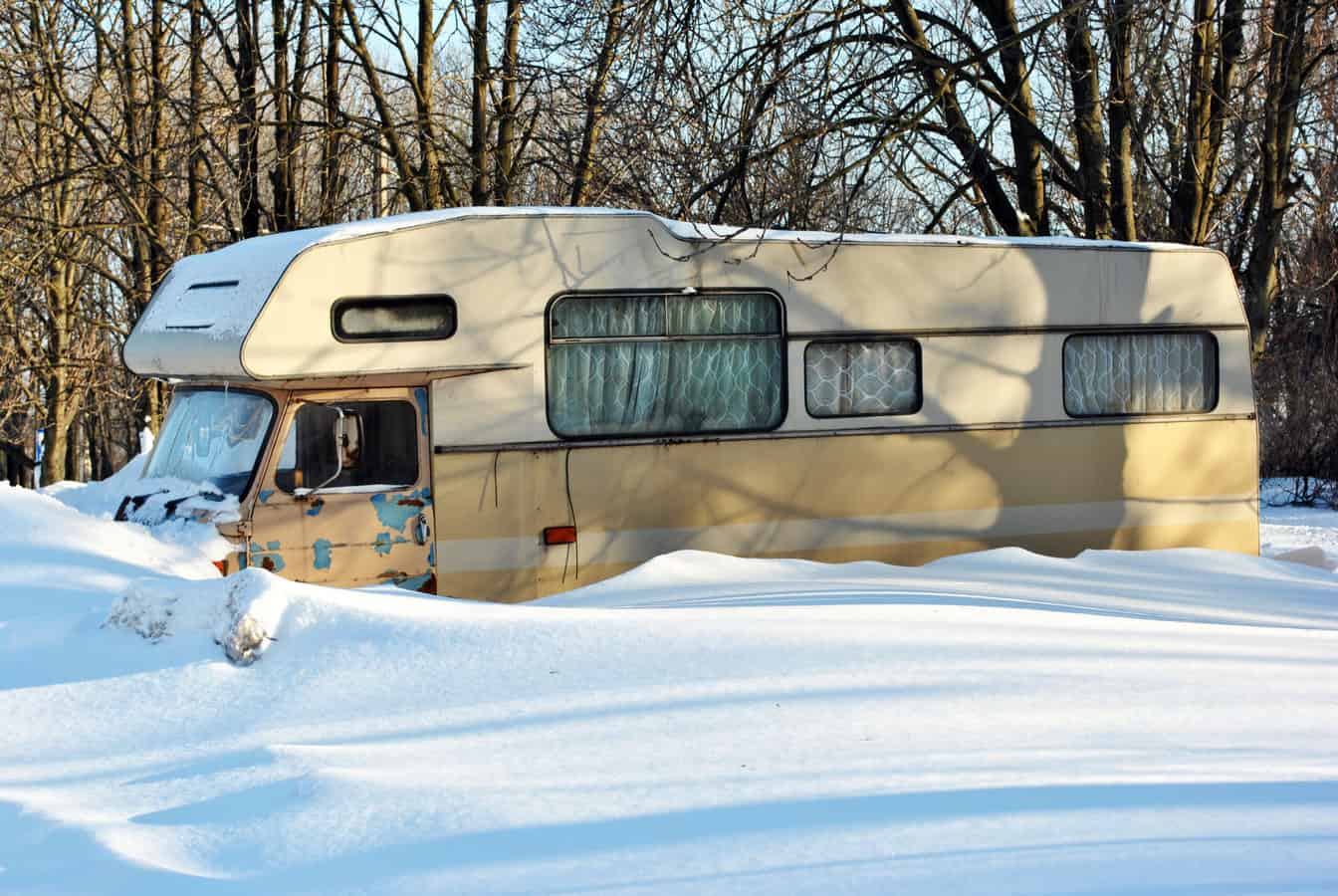
Revolutionize How You Winterize Your RV
Winterizing an RV isn’t fun. It’s not just the tedium and mess of the process, either. Winterizing your RV signifies the end of a season, the end of the freedom and escape that the open road and starry nights provide. At least until next year. Once you come to terms with the fact that you must buckle down and winterize your RV, you must decide whether to use RV antifreeze or compressed air.
Winterize your RV with antifreeze
Using a colored RV antifreeze has been a popular and effective method to winterize your RV for decades. The RV antifreeze is cheap, and the results are a tangible, visible, red or pink color that can be seen coming from every water source.
The downside is that you have to reverse the process in the spring, ensuring that the entire system is completely flushed clean. Depending on your RV’s plumbing location and configuration, winterizing with RV antifreeze can be difficult if you can’t easily access the water pump and diverter valves. Taking pictures of the various configurations with your phone is helpful, provided you can scroll back to the previous year or season and find them again.
Any water filters you have installed must be removed as well. Whole-coach water filter systems will have at least one filter to remove, as will your residential refrigerator, if so equipped. Labor aside, winterizing with a liquid RV antifreeze is a reliable and inexpensive option.
Winterize your RV with compressed air
Using compressed air to blow out your water lines is another way to winterize your RV. If you already have a good tankless air compressor, this method is essentially free, barring any air fittings, regulators, or blow-out plugs you may need.
Winterizing your RV with air is a great option because there isn’t really a reversal process in the spring. Just run fresh water through all your faucets and appliances and you are ready to go.
The cons to this method are that you should use a tankless air compressor to prevent oil and other contaminants from being blown into the freshwater system. If you don’t have one of these, be sure and get one that’s suitable for your RV tires as well, such as the VIAIR 400P.
Assembling all the pieces and manually blowing out all the lines is a bit of work, but with practice and the right tools, is a worthwhile venture. You will still need some of the liquid RV antifreeze to protect some drains, and your washing machine pump, if so equipped.
Winterizing your RV with the Floë Integrated Drain Down System
Lippert Components is the exclusive distributor for a simple yet revolutionary device designed to allow you to easily drain down and clear your water lines with compressed air using their Floë Integrated Drain Down System.
Designed to be permanently mounted in 12-volt and 115-volt configurations, the Floë system typically mounts near your water pump. After installing Floë, draining out your RV’s water system is easy. Simply turn it on and flush each line out, one at a time. In minutes, you can have your RV winterized or prepped for your next camping adventure.
For the RVer, this means no more lugging the air compressor, hoses, and fittings out to blow out the water lines. For most RVs, this simple system will do the trick in just minutes with very little effort.
“Floë is an amazing product that adds tremendous value to RV owners. This is the only solution of its kind in the market. We found this product in the European markets selling very well as clean water and clean water lines are major concerns for retail customers today. We’re very excited to offer this simple, convenient, and innovation product to market,”
Mark Boessler – Senior Vice President Aftermarket at Lippert Components
Things to remember
RVers with larger, more complex RVs should take heed of some extra steps you’ll still face. If your coach is equipped with a whole-coach water filter, it will need to be drained. A little RV antifreeze should still be used in difficult areas, such as the RV washing machine water pump, if so equipped.
The shower drain can be another area with some difficult routing, so a little RV antifreeze down that drain won’t hurt. Campers with residential refrigerators that have an onboard water filter and/or ice maker should make sure those are both drained as well.
Even with these caveats, winterizing is made much simpler with the Floë system. If a nice weekend should poke its head out prematurely, you can easily take advantage of that great weather.
Your primary water systems will be clean, dry, and free of antifreeze. You can enjoy that brief moment of rocket summer and upon return, use the Floë system to clean out the lines, empty your water filter reservoir, and close up the RV again. Unless you spent that great weekend washing clothes, your washer pump should still be good to go.
Installing the Floë Integrated Drain Down System
Installing Floë is relatively easy. I recommend scouting out your installation location before buying a Floë device. The Floë 12-volt version is cheaper, but it depends on what power is available to you and your level of electrical knowledge and skill. If it’s easier to plug it in to a 110-volt outlet, it might be with the extra cost of the Floë 115-volt version to just go with what’s easy. It’s entirely up to you.
Your installation area should be near a power source as mentioned, be near your water pump, and have a flat surface nearby to mount the Floë device. You’ll have to make one cut in your water line, so make sure your water pump is off and you’ve opened up a faucet to drain the water and reduce pressure.
You’ll probably still have some water come out, so go in armed with a towel to catch the excess. After mounting, tapping into the water source, and getting power, you are basically done. Obviously, that’s a very simplified rundown, be sure to check the documentation that is included.
How to avoid winterizing your RV
You can avoid winterizing your RV altogether by renting out your RV and keeping it active. Outdoorsy has a great program to make sure your RV makes you money instead of sitting in the snow or an expensive storage yard.
You could also use a great site like CampgroundReviews.com to find campgrounds and destinations in those warmer climates where winterizing isn’t needed.




